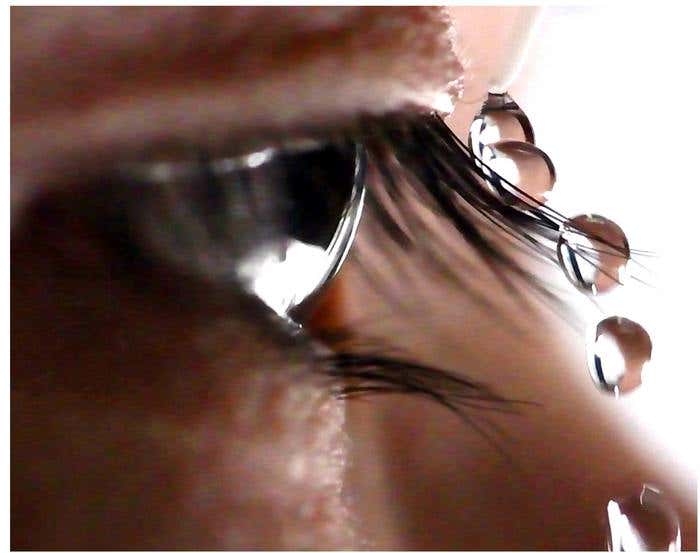Breakthrough light innovation could make surgery and biopsies unnecessary
New research shows twisted light can see through tissue, paving the way for painless medical tests and faster optical communication.

Scientists have found that twisted light can pass through cloudy tissue while keeping its structure intact, opening doors for pain-free diagnostics. (CREDIT: CC BY-SA 4.0)
Light doesn’t just travel in straight lines—it can also twist. And when it does, it opens new frontiers in science and medicine. A recent breakthrough led by Professor Igor Meglinski at Aston University has shown that light structured with orbital angular momentum (OAM) can do more than carry information. It can also reveal what lies beneath the skin without making a single cut.
Structured light like this, sometimes called vortex beams, has a spiral twist that gives it a helical phase. That twist allows OAM light to keep its shape and identity even after passing through cloudy or messy environments—like biological tissue. Until recently, that seemed impossible. But now, this special light is being studied not just for transmitting data faster, but also for seeing into the human body without surgery or needles.
A New Tool for Exploring Complex Media
Traditional light often scatters and loses its way in turbid materials like fog, skin, or milk. But OAM beams hold on to their twisty shape. That’s thanks to their topological charge, a kind of ID tag that helps them stay organized while traveling through complex environments. Scientists have found that the phase of this light can stay steady even after bouncing around inside tissues.
The research team, working with the University of Oulu in Finland, ran a series of tests to see how OAM beams behaved in different materials. They changed the density and scattering properties of each medium and used tools like digital holography and interferometry to measure the results. These experiments showed that OAM beams can detect even the smallest shifts in a material’s refractive index—changes as tiny as one part in a million (10⁻⁶).
Why does that matter? Because small changes in how light bends inside the body can reveal a lot—like blood sugar levels or tissue changes that might signal disease. According to the paper published in Light: Science & Applications, OAM beams offer a way to do just that, all without touching the tissue.
What Makes Twisted Light So Powerful?
For years, researchers have used polarized light to study materials in astrophysics, engineering, and biology. But adding OAM into the mix is a newer step. And it’s a big one.
Related Stories
OAM light carries information through its spiral twist. In communications, this feature has already helped boost data bandwidth. In science, it's helped create exotic laser beams and improved ways to trap and move tiny particles or cells. Now, scientists are finding that the same features also work well for medical uses—especially for non-invasive probing.
The big discovery here isn’t just that OAM can move through biological tissues. It’s that it can do so while keeping its “memory” intact. That means it doesn’t forget how it started—even after scattering around inside complex tissue. This memory-like behavior helps it spot changes, even in tricky conditions like foggy tissue or fluid.
When researchers tested OAM light in both clear and cloudy environments, they noticed that the beams’ ability to hold onto their shape and phase made them perfect for finding subtle differences inside tissues. This could allow doctors to monitor disease or track healing without taking samples or making cuts.
A Leap Toward Non-Invasive Diagnostics
One of the most promising uses of this technology is in diabetes care. Right now, most glucose monitoring requires a finger prick or a skin sensor. But OAM light could one day read blood sugar levels through the skin—without pain or punctures.
Professor Meglinski explained, “By showing that OAM light can travel through turbid or cloudy and scattering media, the study opens up new possibilities for advanced biomedical applications. For example, this technology could lead to more accurate and non-invasive ways to monitor blood glucose levels, providing an easier and less painful method for people with diabetes.”
This twisty light could also help doctors track how tumors respond to treatment or find signs of inflammation in hard-to-reach areas. Since the light can “feel out” changes in tissue based on its refractive index, it might become a valuable tool for checking internal health without ever going inside.
Beyond Medicine: Smarter Optical Communication
OAM beams aren’t just useful for looking inside the body. They’re also making waves in communication. These structured beams can carry large amounts of information in separate channels using their different topological charges—like spinning disks on separate frequencies. This allows more data to pass through the same space without interference.
That’s especially important in settings where other types of light struggle. For instance, OAM beams could help send signals through fog, water, or even biological tissue—environments where regular light quickly loses power.
But the most exciting development in this new study is the shift in how OAM is being used. Previously, it was seen mostly as a tool for communication. Now, it’s also being explored as a tool for discovery.
Instead of just sending information from point A to B, OAM light is being used to uncover the secrets of what lies in between. The topological structure of OAM beams allows them to detect fine changes in their environment—like a sensitive finger reading Braille.
This makes them ideal for probing biological materials, where even the smallest variation can offer insight into health. And because they keep their phase stability, they offer a more reliable way to track these changes than many traditional methods.
A Path Toward Practical Use
The key to the success of OAM light in real-world settings lies in its consistency. That’s where the recent study shines. The research team found that their results matched up well with theoretical models. That’s a strong sign that this isn’t just a lab trick—it’s a technology that could work in clinics, hospitals, and even in wearable devices.
Professor Meglinski and his team believe that OAM light could lead to everything from better imaging tools to secure medical data transmissions. The team’s work not only confirms the value of structured light in science, but also pushes the boundaries of what it can do.
This research, already recognized as one of the year’s most exciting studies by the international group Optica, shows how light that twists could help reshape modern diagnostics and sensing tools.
As Professor Meglinski put it: “The potential for precise, non-invasive transcutaneous glucose monitoring represents a significant leap forward in medical diagnostics. My team’s methodological framework and experimental validations provide a comprehensive understanding of how OAM light interacts with complex scattering environments, reinforcing its potential as a versatile technology for future optical sensing and imaging challenges.”
With further research, this technology could be built into compact, wearable sensors, diagnostic scanners, or communication devices—making twisted light a powerful tool for both healthcare and high-speed data exchange.
Note: The article above provided above by The Brighter Side of News.
Like these kind of feel good stories? Get The Brighter Side of News' newsletter.
Joshua Shavit
Science & Technology Writer | AI and Robotics Reporter
Joshua Shavit is a Los Angeles-based science and technology writer with a passion for exploring the breakthroughs shaping the future. As a contributor to The Brighter Side of News, he focuses on positive and transformative advancements in AI, technology, physics, engineering, robotics and space science. Joshua is currently working towards a Bachelor of Science in Business Administration at the University of California, Berkeley. He combines his academic background with a talent for storytelling, making complex scientific discoveries engaging and accessible. His work highlights the innovators behind the ideas, bringing readers closer to the people driving progress.



